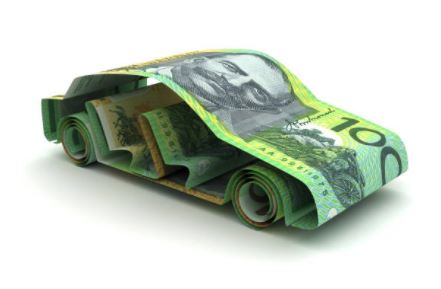Estonian literature refers to literature written in the Estonian language (ca. 1 million speakers). The domination of Estonia after the Northern Crusades https://chinarestaurant-kaisergarten.de/men%C3%BC/ , from the 13th century to 1918 by Germany, Sweden, and Russia, resulted in few early literary works being written in the Estonian language. Originates Livoniae in the Chronicle of Henry of Livonia contains Estonian place names, words and sentence fragments. Many folk tales are told to this day and some have been written down and translated to make them accessible to an international readership. The culture of Estonia incorporates indigenous heritage, as represented by the Estonian language and the sauna, with mainstream Nordic and European cultural aspects. Since administrative reform in 2017, there are in total 79 local governments, including 15 towns and 64 rural municipalities.

- In order to read or download arte desde 1900 art since 1900 modernidad antimodernidad posmodernidad modernism antimodernism postmodernism arte contemporaneo contemporary art spanish edition ebook, you need to create a FREE account.
- In the world, Estonia’s students rank 5th in reading, 8th in mathematics and 4th in sciences.
- According to the census of 2000 , there were about 1,000 adherents of the Taara faith or Maausk in Estonia .
- The siren became pictorialized as a mermaid, and later textually described to match in medieval bestiaries.
- The most important highways in Estonia, in other hand, includes Narva Highway , Tartu Highway and Pärnu Highway .
- Estonia liberalised 35% of its electricity market in April 2010; the electricity market as whole was to be liberalised by 2013.
- Some tales raised the question of whether mermaids had immortal souls, answering in the negative.
In the late 1890s, there was a new surge of nationalism with the rise of prominent figures like Jaan Tõnisson and Konstantin Päts. In the early 20th century, Estonians started taking over control of local governments in towns from Germans. After the crusade, the territory of present-day Southern Estonia and Latvia was named Terra Mariana, but later it became known simply as Livonia. Northern Estonia became the Danish Duchy of Estonia, while the rest was divided between the Sword Brothers and prince-bishoprics of Dorpat and Ösel–Wiek.
National Awakening
In those who develop paralysis, between 2 and 10 percent die as the paralysis affects the breathing muscles. Still another theory, tangentially related to the aforementioned Aquatic Ape Theory, is that the mermaids of folklore were actually human women who trained over time to be skilled divers for things like sponges, and spent a lot of time in the sea as a result. One proponent of this theory is British author William Bond, who has written several books about it.
World War Ii, Soviet And German Occupations
Since 2015 the Estonian defence budget has been over 2% of GDP, fulfilling its NATO defence spending obligation. Geopolitically, Estonia is often considered to be one of the three Baltic countries or “Baltic states” — an unofficial geopolitical grouping which also includes Latvia and Lithuania. However, the term “Baltic states” (“countries”, “nations”, “lands”, or similar) cannot be used unambiguously in the context of cultural areas, national identity, or language. While the majority of the population both in Lithuania and neighbouring Latvia are indeed Baltic peoples , the majority in Estonia are culturally and linguistically Finnic. Initially, many Estonians were hopeful that Germany would help to restore Estonia’s independence, but this soon proved to be in vain.
This grouping of styles of painting and sculpture, especially significant between 1917 and 1920, was practiced by several artists; particularly those under contract with the art dealer and collector Léonce Rosenberg. The tightening of the compositions, the clarity and sense of order reflected in these works, led to its being referred to by the critic Maurice Raynal as ‘crystal’ Cubism. Considerations manifested by Cubists prior to the outset of World War I—such as the fourth dimension, dynamism of modern life, the occult, and Henri Bergson’s concept of duration—had now been vacated, replaced by a purely formal frame of reference. Cubism is an early-20th-century avant-garde art movement that revolutionized European painting and sculpture, and inspired related movements in music, literature and architecture. In Cubist artwork, objects are analyzed, broken up and reassembled in an abstracted form—instead of depicting objects from a single viewpoint, the artist depicts the subject from a multitude of viewpoints to represent the subject in a greater context.
In total, there are 47 linna, with “linn” in English meaning both “cities” and “towns”. Ethnic distribution in Estonia is very homogeneous at a county level; in most counties, over 90% of residents are ethnic Estonians. By 1989, minorities constituted more than one-third of the population, as the number of non-Estonians had grown almost fivefold. Estonia has had a market economy since the end of the 1990s and one of the highest per capita income levels in Eastern Europe. Proximity to the Scandinavian and Finnish markets, its location between the East and West, competitive cost structure and a highly skilled labour force have been the major Estonian comparative advantages in the beginning of the 2000s . As the largest city, Tallinn has emerged as a financial centre and the Tallinn Stock Exchange joined recently with the OMX system.
One of the major theoretical innovations made by the Salon Cubists, independently of Picasso and Braque, was that of simultaneity, drawing to greater or lesser extent on theories of Henri Poincaré, Ernst Mach, Charles Henry, Maurice Princet, and Henri Bergson. With simultaneity, the concept of separate spatial and temporal dimensions was comprehensively challenged. The subject matter was no longer considered from a specific point of view at a moment in time, but built following a selection of successive viewpoints, i.e., as if viewed simultaneously from numerous angles with the eye free to roam from one to the other. Many Cubists, including Picasso, Braque, Gris, Léger, Gleizes, and Metzinger, while developing other styles, returned periodically to Cubism, even well after 1925. Cubism reemerged during the 1920s and the 1930s in the work of the American Stuart Davis and the Englishman Ben Nicholson.
Colín, who also thought that the Philippine woman-fish tasted like fatty pork. The bones were made into beads (i.e., strung together), as it was believed effective against defluxions . In modern Spanish)) was the name given to the creature among the Spaniards, but the sources also state it was called “duyon” by the indigenous people. And it is assumed the actual creature was a dugong (according to modern translators’ notes). Bartholin was actually not exactly the sole propreitor of the specimen, but he came into posseinot of it hand and ribs, which he also illustrated in his book . Based on the illustration, the “hand” has been determined to be the front flipper belonging to a manatee by a team of researchers.
The disease was very well publicized during the polio epidemics of the 1950s, with extensive media coverage of any scientific advancements that might lead to a cure. Thus, the scientists working on polio became some of the most famous of the century. In 2003 in northern Nigeria– a country which at that time was considered provisionally polio free – a fatwa was issued declaring that the polio vaccine was designed to render children sterile. Subsequently, polio reappeared in Nigeria and spread from there to several other countries.
